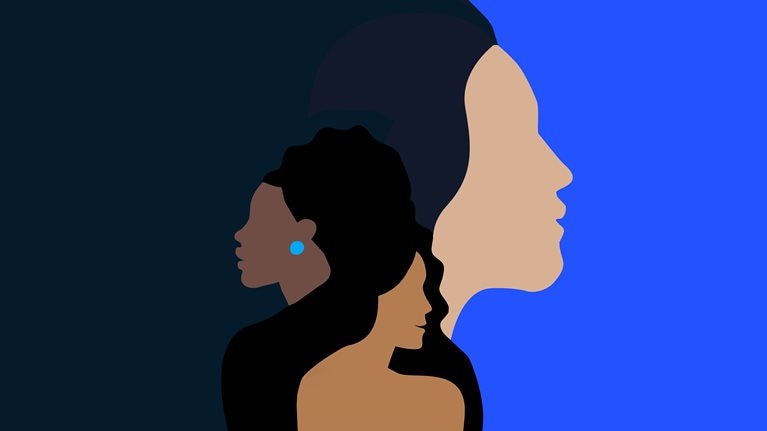In this conversation, McKinsey partners Kristen Ganjani and Elixabete Larrea discuss the opportunity for the insurance industry to amplify marginalized voices at all levels. They offer their own perspectives as women in a male-dominated industry, as well as the actions leaders can take to create a more inclusive environment and ensure that other women and people of color are offered chances to advance and succeed. The following transcript has been edited for clarity.
Kristen Ganjani: In terms of diversity and inclusion, do you think we’re making the progress that we hope to as an industry?
Elixabete Larrea: I think the insurance industry should carry the torch on this topic. In fact, we have a good opportunity to do that because if you compare the numbers of women and people of color across all entry-level jobs, we are remarkably above other industries.
When it comes to entry-level roles, insurance is composed of 66 percent people with diverse profiles, while other industries are around 40 percent. But we lose a lot of this talent through the pipeline, specifically after the first two jumps from entry level to manager and from manager to senior manager. We call these jumps the “broken rung.” And in insurance, it results in a loss of almost ten percentage points in each jump. So if we start with 66 percent, we lose 10 percent in the first jump and another 10 percent in the other jump. Unlike other industries, we have an opportunity to retain all that diverse talent and let it climb the ladder into leadership positions. I think we are wasting it.
Kristen Ganjani: Why is the double broken rung happening?
Elixabete Larrea: Because we still have a long way to go when it comes to creating opportunities for women and people of color. On one hand, that might happen because many managers don’t have the capabilities, training, or awareness on how to do that. On the other hand, some managers still have unconscious biases. They assume they can’t offer a particular role or opportunity to a woman, for example, because she needs to take care of her kids.
We also need to make sure that people feel comfortable, confident, and in enough of an inclusive environment that they want to raise their hands for an opportunity. There is a lot to be done when it comes to offering these chances to our diverse community.
Kristen Ganjani: I’ve also heard about a concept called microaggressions. Can you tell me what that means?
Elixabete Larrea: This is a fascinating concept. I didn’t realize that I experience a lot of microaggressions on a day-to-day basis until I read about it and looked at the examples. It made me more aware of them when they happen.
A microaggression is a small negative behavior. For example, [it’s] when somebody speaks over somebody else—typically a woman or person of color—in a conversation or in a meeting because they think that the other person doesn’t have the ability to answer the question or provide their perspective. Microaggressions are small actions, but they have a big impact. I’ll often tell folks around me to pay attention to those actions. We tend to let them go because we are not trained to listen for them.
If we were trained, we could stop the conversation and call it out. Or, at the end of the meeting, tell the person what they did and ask if they know the impact that that action could have on another person. We all need to do a better job of addressing microaggressions. Recognizing and handling them is a central part of what it means to create an inclusive environment at work.
Kristen Ganjani: What can I do as a leader if I observe something like this?
Elixabete Larrea: The best thing that you can do is to speak up because people facing microaggressions need allies. You might not feel comfortable at first, but push yourself, because it matters. I’m sure that you have lived some of those microaggressions yourself. But I’m also sure that most of the time, you haven’t called them out because you felt like you couldn’t say something about it. I think we all need to try to do that because it would make such a difference in people’s lives.
Kristen Ganjani: Can you tell me a little bit about the experience of women of color? I think they have an even tougher experience than you or I have.
Elixabete Larrea: Women of color have much less sponsorship than you and I might have. They also experience microaggressions two or three times more than other women. Interestingly, they feel these microaggressions from other women, specifically from White women.
We need to help them day to day by giving them allyship and sponsorship, especially if you are in a senior position. If you ask, most of us would say that we are doing things to be a better ally. The truth is that women of color perceive that allyship only half of the time. So there’s a clear disconnect between how impactful we perceive our actions to be and what others are perceiving as impactful. We might have good intentions when we do things, but they’re not as impactful as we wish they were.
Kristen Ganjani: I’ve heard you talk before about being vocal about creating opportunities and then pushing others to do the same thing. I think often, as women, we take the burden on ourselves to do this in our companies. We feel like we are solely responsible for taking care of others. How do we challenge the rest of our organizations to help too?
Elixabete Larrea: One thing that happened during COVID-19 was that women took on an extra burden for everything related to well-being, sponsorship, allyship, and D&I [diversity and inclusion] in their organizations up to two or three times more than senior men. So on top of all the pressure everyone felt during the pandemic to do a good job, women added on another set of responsibilities. We need to do two things. First, we need to recognize these women for the work that they’ve done in their reviews and conversations and celebrate it. Second, we need to share the burden. We need to have senior men in the organization have the same level of response our senior women have and engage them in well-being, D&I efforts, and allyship. We need everyone’s help to solve this issue.
Kristen Ganjani: Can you tell me a little bit about being an “only”? That’s something that I’ve experienced in a lot of my teams and something that you and I have worked hard to prevent happening with people who work with us.
Elixabete Larrea: An “only” is a very simple concept: it’s when you are the only person of a particular group in your meetings or on your team. It could be the only woman in a room full of men. It could be the only Black person in an all-White boardroom. There is also the concept of the “double only.” For example, you could be a Black woman in a White male environment. Our research shows that microaggressions happen more often in these circumstances. You’re also more likely to feel like you don’t belong and don’t feel included because you’re not around people that look like you.
Some research shows how to combat this in a way that seems a bit counterintuitive. Let’s say, for example, that you have three new women in the organization and three teams. If you want to have diverse teams, you would think to put one woman in each of the teams. But this research says that that’s not the most effective way to do things because it takes three people to create a critical mass. In other words, it takes three “onlys” to give them enough critical mass to have their voice heard and to be able to have a different type of conversation. Even if it’s counterintuitive, instead of having one woman on each of the teams, it would be much more powerful to have those three women on one team to create a good experience and then build from there.
Elixabete Larrea: Kristen, what advice would you give people who are a bit more junior or growing in the insurance industry?
Kristen Ganjani: There are a couple of things that are important for somebody to remember as they grow in their career. The first is to make sure you’re good at what you do. Your reputation is your currency. You have to be good at the job that you have now if you want to have opportunities available to you in the future. Invest the time. Put the energy into being good at what you’re doing now, not what you want to be doing tomorrow.
The second thing is surround yourself with people that you want to work with—people who are role models to you in the type of working style that you would like to work in. The job is hard. You will work a lot, and the more you see inspirational leaders around you, the more growth and potential you’ll have. The third thing is to give yourself grace and patience. You have a long career ahead of you. The natural tendency is to run as fast as possible. But at times you may need to step back, and that’s OK. Move at your own pace, be your own superhero, and you will do incredible things.
Elixabete Larrea: There’s one other thing that I would add. It’s one of my biggest learnings, and it’s around being authentic and being yourself. I’ve often been told that my style or my communication is different. There’s something special about each of us, and I think it’s linked to what you were saying about focusing on something that you do well. It’s about embracing and owning who you are—your accent, your identity—and not changing things because you don’t fit. You are different from the mold.
So I think you need to make your own mold. And I think that’s inspiring for others. It also makes you much better at what you do because you are doing what you love, you’re passionate about it, and you are doing it with your own style, which I think is important, especially in a male-dominated world. I would encourage everyone to find their true selves and own it and not be afraid of it. Be confident and keep moving.


